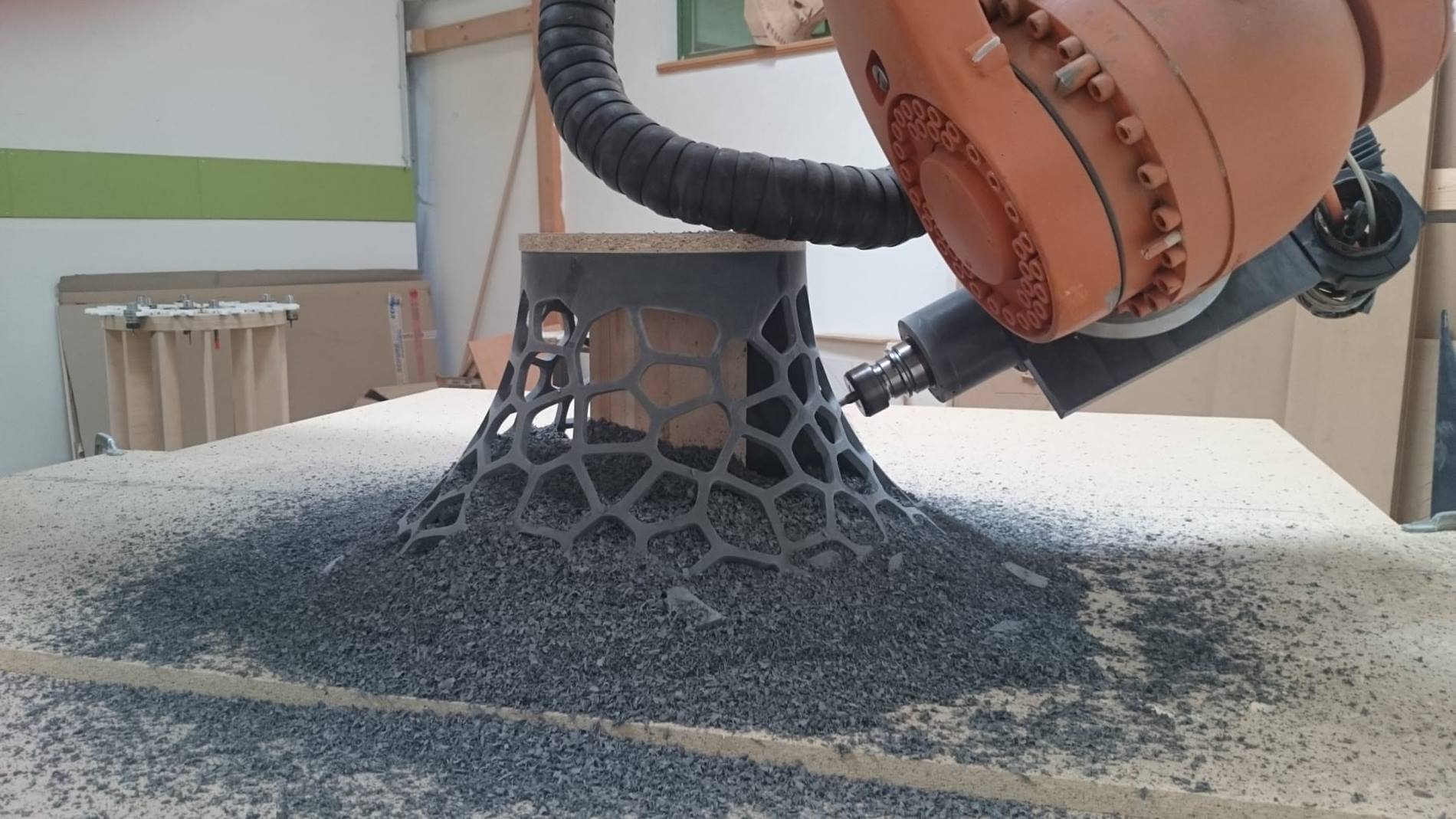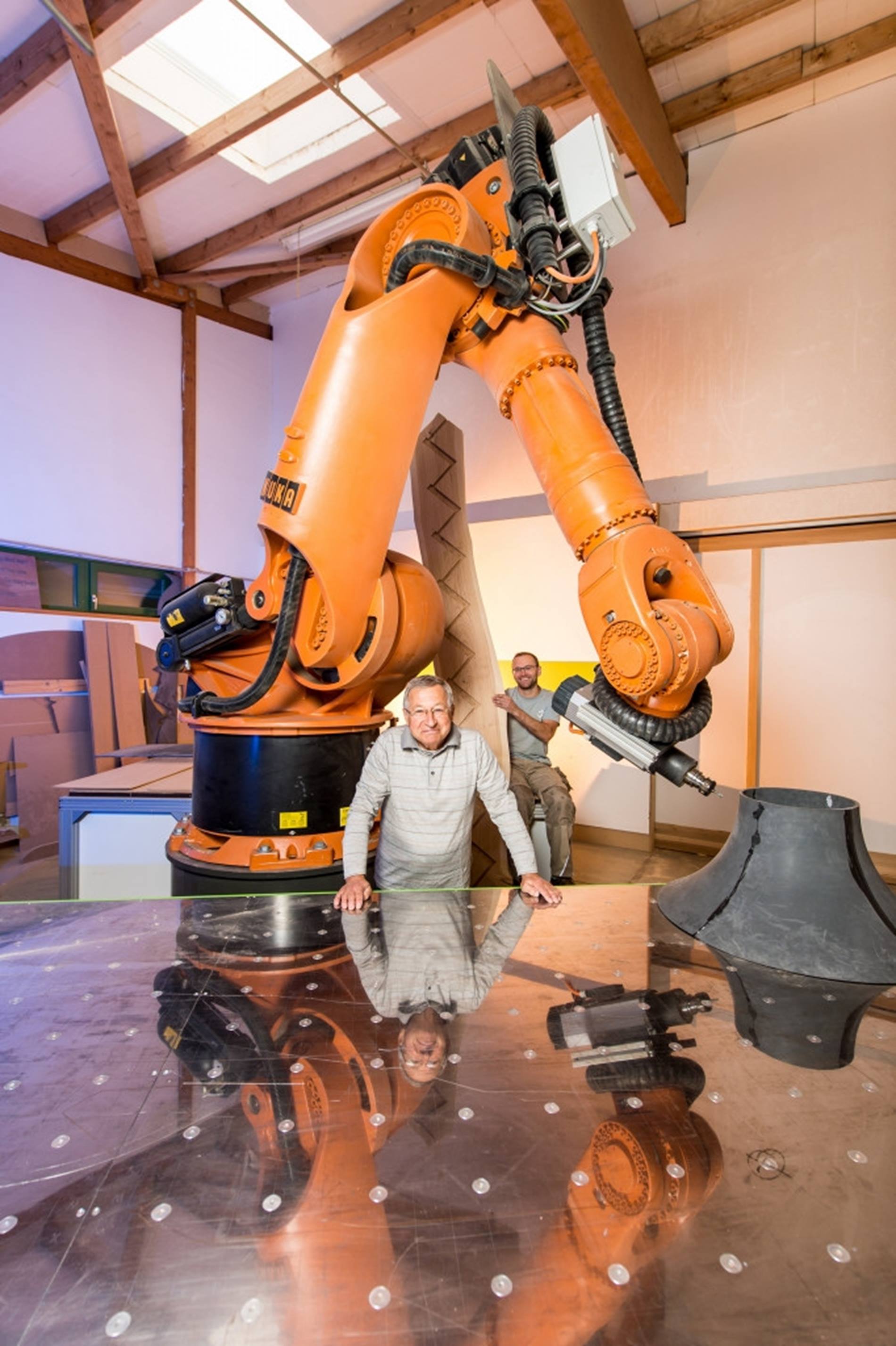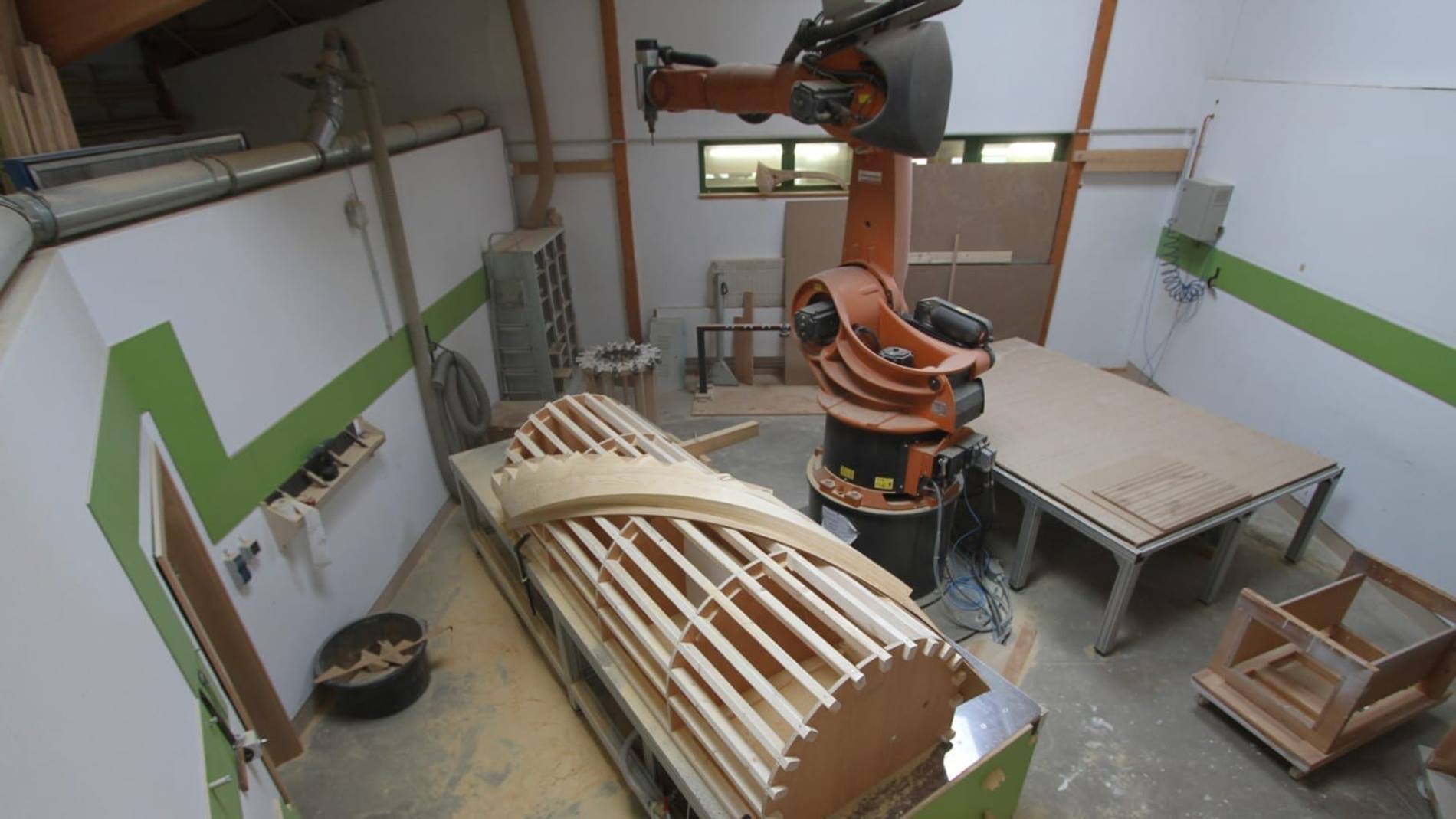About ten years ago, the Eigenstetter joinery in Rehna was faced with a mammoth project – a KUKA robot was the solution. To this day, the KR 500 mills large-volume components in its cell with the highest precision. Managing Director Martin Eigenstetter is already working with KUKA and the Fraunhofer Institute on the next robot project.
Big task, big solutions
A circular front door with a stub arch for a round tower: When the Eigenstetter joinery in Rehna accepted this special order in 2011, it also needed a special solution. The craftsman’s business specializes in interior fittings and the manufacture of windows and doors. But the complex and technically demanding order presented the 21-employee carpentry shop in the west of Mecklenburg-Vorpommern with a new challenge. After all, it was CNC-free at the time. Master carpenter Axel Eigenstetter relied on high traditional craftsmanship. His son Martin, who studied mechanical engineering, brought technical digitization into the family business – and created a robot milling center of impressive dimensions that was unique in the woodworking trade to date.
KUKA robot masters complicated shapes and different materials
Today, the KUKA KR 500 FORTEC robot stands in a seven-meter-high hall. Three employees are responsible for the robot, which has five axes of motion and a reach of four meters. This enables it to master various clamping solutions and at the same time create the most complicated shapes and process a wide variety of materials. Eigenstetter still offers the entire spectrum of classic joinery work such as windows, stairs or furniture. But the company has also become a go-to source for complex, three-dimensional shapes and multi-curved surfaces of the highest precision. One example was a research project to build a giant mold for a ship’s propeller. The technology, areas of application and potential sales were recorded in a business plan, and subsidies were used.
Large order was no longer a problem
The Central Innovation Program (ZIM) of the German Federal Ministry of Economics and Technology provided the major start-up funding, because the development of robot-based CNC manufacturing was a truly mammoth project. “It seemed like an obvious idea if you didn’t want to go the way of the herd and thus end up in grazed pastures,” says Martin Eigenstetter about the move. The first major order, which could only be accepted thanks to the new robot: three huge, curved, three-story spiral staircases as a listed replica of original castle staircases. The robot can change the required milling tools independently and switches from 3-axis to 5-axis operation depending on the process.
Already eyeing the next projects
Eigenstetter is already working on the next project with the local Fraunhofer Institute. “We want to use smaller robots in medium series on joinery machines such as a milling machine or a belt sander according to the part-to-tool principle,” he explains. In this case, the parts to be machined are placed in the machines by robots. He sees this as having great potential for the future in the skilled trades. And his father, Axel Eigenstetter, also sees the advantages of colleague robots. As early as 2017, the master carpenter told a trade magazine: “In the long term, no one will be able to avoid dealing with digitization in order to become faster and get a better grip on their production.”
A robot in the skilled trades pays for itself very quickly – even in companies with 5 or more employees. You can find out how a robot can also lend a hand in your company on the KUKA website.
You can also find out more about this topic on the KUKA blog in our series “Robotics. A hammer for craftsmen.”












